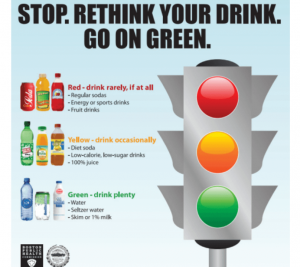By Kara Sherrer
Overconsumption of sugary drinks, especially soft drinks, has been linked to health issues such as obesity. As a result, many recent health policies have targeted the sale of soft drinks, leading some retailers to adjust pricing strategies. One increasingly popular pricing approach is what Professor Kelly L. Haws calls the “any size, same price” strategy, where all sizes of soft drinks are listed for the same price, often $1.

Kelly L. Haws, Anne Marie and Thomas B. Walker Chair, Professor of Marketing
Haws examines the effects of this pricing strategy on consumer behavior in her paper, Any Size for a Dollar: The Effect of Any-Size-Same-Price versus Standard Pricing on Beverage Size Choices. The paper is co-authored by Peggy J. Liu of the University of Pittsburgh, Steven K. Dallas of New York University, John Cawley of Cornell University, and Christina A. Roberto of the University of Pennsylvania.
“Many restaurants and convenience stores have implemented any size, same price policies for fountain or other beverages, no doubt to increase traffic,” says Haws. “But how does such information affect size choice, and how might this differ when calorie counts are also made salient?”
The Role of Pricing in Soft Drink Consumption
The researchers conducted 3 studies to explore how changing beverage prices affect consumers’ drink choices. They found that when multiple sizes of beverages are listed for the same price, consumers were more likely to choose the larger-sized beverages. This held true even when calorie information was listed beside the beverage sizes, showing that the larger drinks contained more calories. This suggests consumers are more sensitive to price than health information and will be motivated to choose the better monetary deal even if it means more calories.
The researchers also found that when multiple sizes of beverages were listed for different prices, consumers were more likely to choose the smaller, less expensive drinks with fewer calories; this suggests that providing calorie information alone can be effective with standard pricing, but it’s not enough to overcome the financial value focus caused by any size, same price offering.
“Overall, we find that when beverages are offered at any size, same price levels, size choice and corresponding calories ordered increase compared to standard pricing. And, this increased size choice holds in the presence of calorie information for each beverage size,” says Haws.
Impact of Different Health Messaging: Calories vs. Graphics
Beyond posting the calorie information, the researchers tested a more colorful health graphic based on a traffic stoplight. The graphic indicated types of beverages that should be consumed rarely (“red”), occasionally (“yellow”), or regularly (“green”) based on how healthy they are.
 Participants who viewed this graphic first were more likely to choose smaller beverages with fewer calories, even when all beverage sizes were listed for the same price. This finding indicates that more powerful health interventions (such as the traffic light graphic) can overcome the appeal of getting more beverage for the same price.
Participants who viewed this graphic first were more likely to choose smaller beverages with fewer calories, even when all beverage sizes were listed for the same price. This finding indicates that more powerful health interventions (such as the traffic light graphic) can overcome the appeal of getting more beverage for the same price.
“Although additional health messaging can reduce this increase in calories purchased, calorie counts alone did not,” says Haws. “As such, we reiterate the importance of examining public policies as they intersect with other marketplace variables… including prices.”
The paper, Any Size for a Dollar: The Effect of Any-Size-Same-Price versus Standard Pricing on Beverage Size Choices, was published in the Journal of Consumer Psychology. A pre-print version of the paper can be accessed for free at SSRN.org.